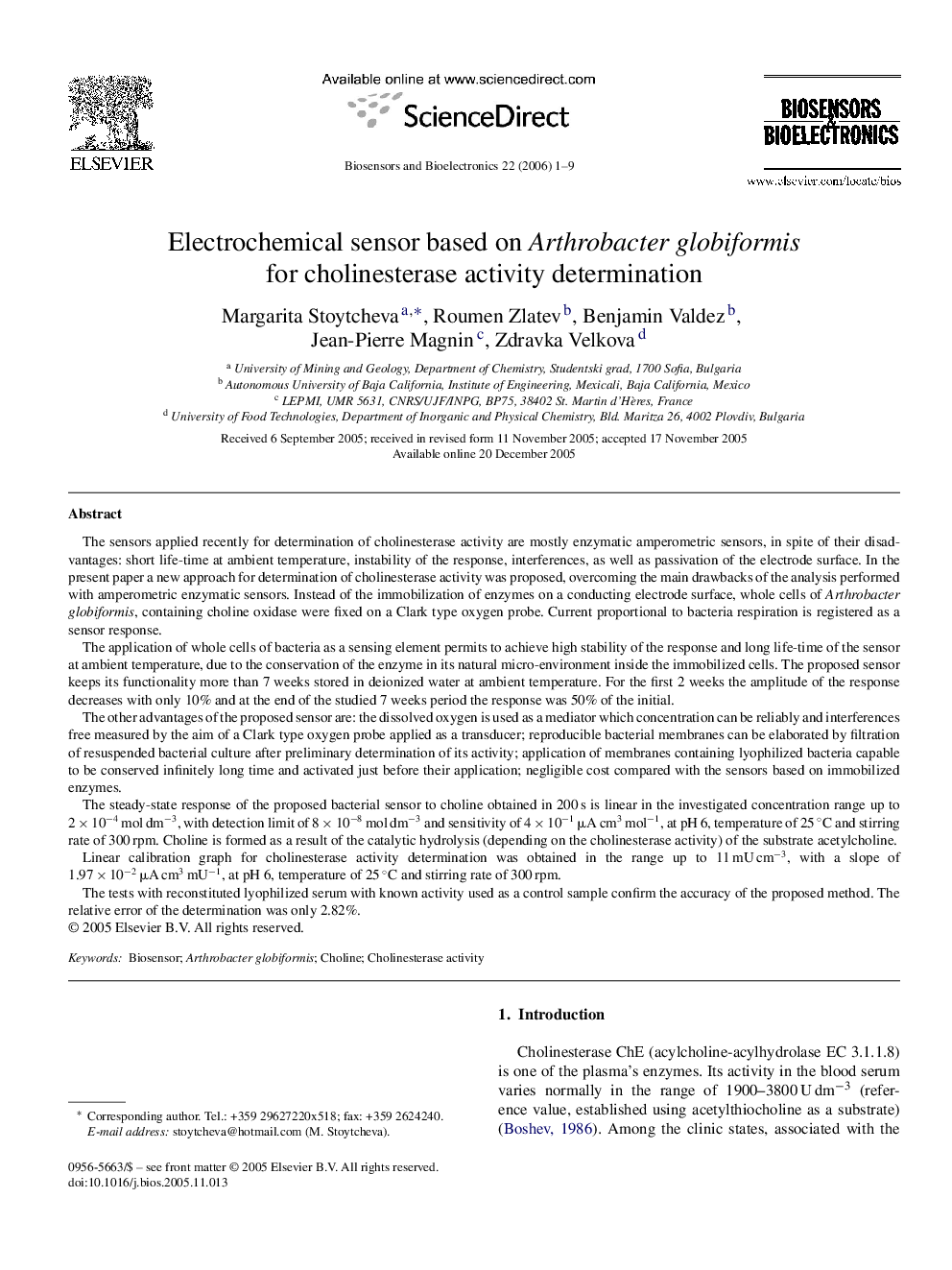| کد مقاله | کد نشریه | سال انتشار | مقاله انگلیسی | نسخه تمام متن |
|---|---|---|---|---|
| 869993 | 909846 | 2006 | 9 صفحه PDF | دانلود رایگان |

The sensors applied recently for determination of cholinesterase activity are mostly enzymatic amperometric sensors, in spite of their disadvantages: short life-time at ambient temperature, instability of the response, interferences, as well as passivation of the electrode surface. In the present paper a new approach for determination of cholinesterase activity was proposed, overcoming the main drawbacks of the analysis performed with amperometric enzymatic sensors. Instead of the immobilization of enzymes on a conducting electrode surface, whole cells of Arthrobacter globiformis, containing choline oxidase were fixed on a Clark type oxygen probe. Current proportional to bacteria respiration is registered as a sensor response.The application of whole cells of bacteria as a sensing element permits to achieve high stability of the response and long life-time of the sensor at ambient temperature, due to the conservation of the enzyme in its natural micro-environment inside the immobilized cells. The proposed sensor keeps its functionality more than 7 weeks stored in deionized water at ambient temperature. For the first 2 weeks the amplitude of the response decreases with only 10% and at the end of the studied 7 weeks period the response was 50% of the initial.The other advantages of the proposed sensor are: the dissolved oxygen is used as a mediator which concentration can be reliably and interferences free measured by the aim of a Clark type oxygen probe applied as a transducer; reproducible bacterial membranes can be elaborated by filtration of resuspended bacterial culture after preliminary determination of its activity; application of membranes containing lyophilized bacteria capable to be conserved infinitely long time and activated just before their application; negligible cost compared with the sensors based on immobilized enzymes.The steady-state response of the proposed bacterial sensor to choline obtained in 200 s is linear in the investigated concentration range up to 2 × 10−4 mol dm−3, with detection limit of 8 × 10−8 mol dm−3 and sensitivity of 4 × 10−1 μA cm3 mol−1, at pH 6, temperature of 25 °C and stirring rate of 300 rpm. Choline is formed as a result of the catalytic hydrolysis (depending on the cholinesterase activity) of the substrate acetylcholine.Linear calibration graph for cholinesterase activity determination was obtained in the range up to 11 mU cm−3, with a slope of 1.97 × 10−2 μA cm3 mU−1, at pH 6, temperature of 25 °C and stirring rate of 300 rpm.The tests with reconstituted lyophilized serum with known activity used as a control sample confirm the accuracy of the proposed method. The relative error of the determination was only 2.82%.
Journal: Biosensors and Bioelectronics - Volume 22, Issue 1, 15 July 2006, Pages 1–9